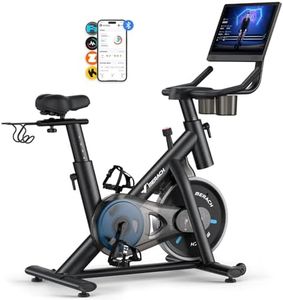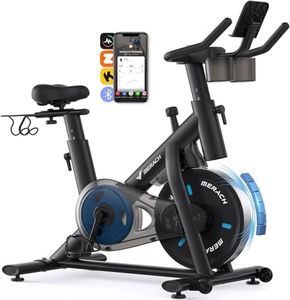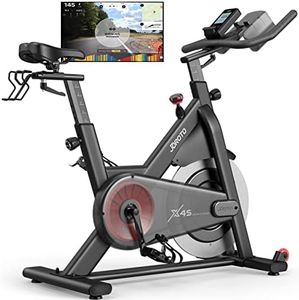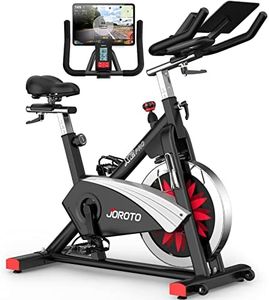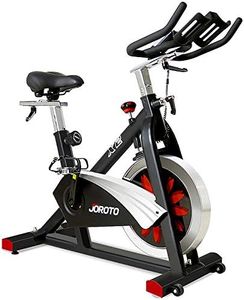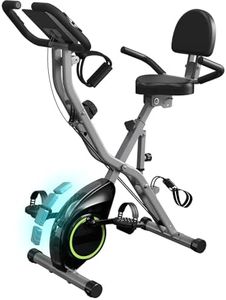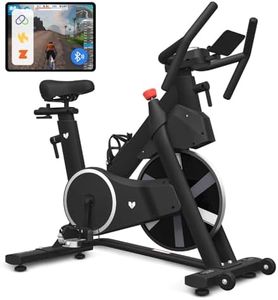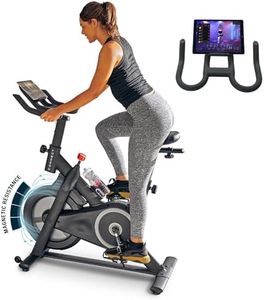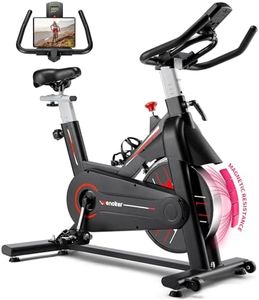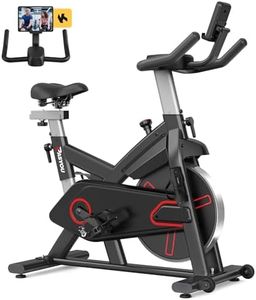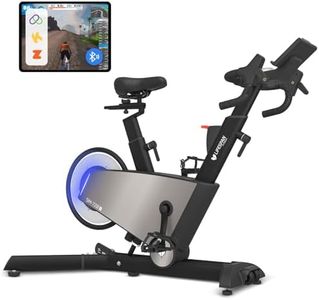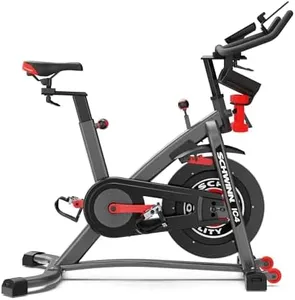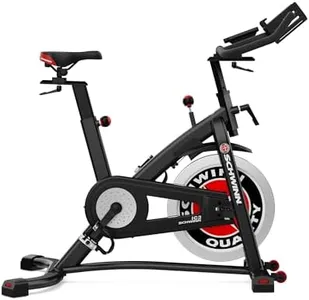We Use CookiesWe use cookies to enhance the security, performance,
functionality and for analytical and promotional activities. By continuing to browse this site you
are agreeing to our privacy policy
10 Best Spinning Bikes
From leading brands and best sellers available on the web.Buying Guide for the Best Spinning Bikes
Choosing a spinning bike is all about matching your riding style, workout goals, and comfort preferences. Spinning bikes are great for both intense cardio and low-impact exercise, so the right one can help you stay consistent and enjoy your workouts. Navigating all the options can feel overwhelming, but by breaking down each key feature, you’ll be able to focus on what actually matters to you and get the most out of your purchase. Start by thinking about how often you’ll use the bike and what you want to achieve, like weight loss, endurance, or just staying active at home.Flywheel WeightThe flywheel is the heavy wheel at the front or rear of the spinning bike, and its weight is a big factor in how smooth and stable your ride feels. Heavier flywheels (usually 30 pounds and above) create a fluid, realistic road cycling sensation and tend to feel more stable, while lighter flywheels (typically under 20 pounds) may suit beginners who prefer an easier and less challenging pedal stroke. If you like intense, standing sprints or want the closest feel to outdoor cycling, a heavier flywheel is a good fit, while casual riders or those with knee issues may appreciate a lighter one for its easier resistance.
Resistance TypeThis refers to the way the bike creates pedaling resistance, usually either friction (felt pads) or magnetic (magnets near the flywheel). Magnetic resistance is quieter, more durable, and requires little maintenance, making it a great choice for shared or quiet spaces. Friction resistance can offer a wide range of intensity but might need occasional pad replacement and can make more noise. If you want a low-maintenance and silent ride, consider magnetic; but if maximum resistance and a traditional feel matter most, friction will suit you.
AdjustabilityAdjustability covers how much you can customize the seat and handlebars’ height and reach. This is important for comfort, good posture, and preventing injury. Bikes with more options (up-down and forward-back adjustment) can better suit a range of body types and enable multiple users to find a perfect fit. If you are taller, shorter, or plan to share the bike with others, pick a model with plenty of adjustability to ensure comfort during long rides.
Console and Display FeaturesSome spinning bikes come with a screen that shows your workout data like speed, distance, RPM (cadence), time, and sometimes heart rate. Others are simpler, or even lack a console altogether. For those driven by numbers, training apps, or who like following specific programs, a good display is motivating and useful. If you just want a basic ride and aren’t tracking stats, this is less essential.
Build Quality and Frame MaterialThe frame and build material determine the bike’s stability, durability, and weight capacity. Steel frames are most common and sturdy, but bikes can vary in how thick and robust the construction is. Heavier, solid bikes feel steadier during vigorous rides, while lightweight models are easier to move but can feel less stable. If you plan on intense workouts or need a higher weight limit, prioritize a strong, steady build.
Drive System (Belt vs. Chain)The drive system connects your pedaling to the flywheel, usually with a belt or a chain. Belt drives are quieter, smoother, and require little maintenance, which is ideal for home use. Chain drives are more like traditional outdoor bikes, can be noisier, and need occasional lubrication. For whisper-quiet workouts and less upkeep, go for belt drives. If you prefer the feel of outdoor cycling or prioritize authenticity, consider a chain drive.
Pedals and CompatibilityPedals range from standard toe cages to dual-sided versions that accept cycling shoes with cleats. Toe cages are suitable for beginners or anyone using regular athletic shoes, while clip-in pedals are great if you already own cycling shoes and want maximum pedaling efficiency. Think about what footwear you want to use—if you plan to get serious about spinning, clip-in capability might be worth it.
